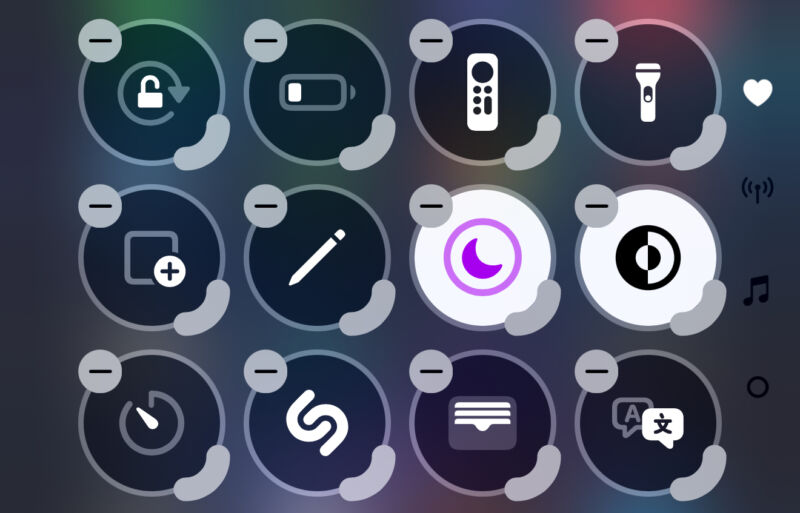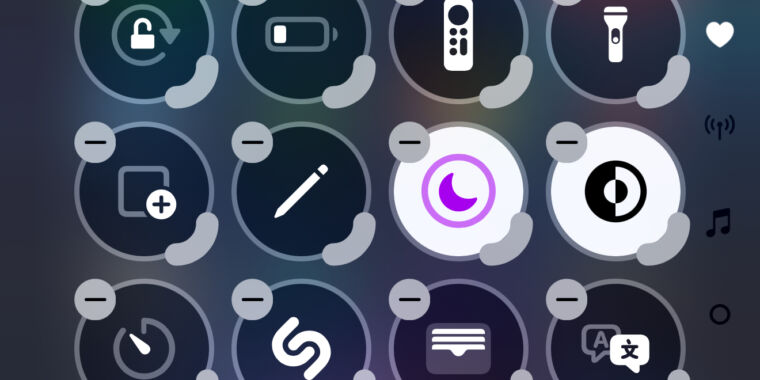
Samuel Axon
iOS 18 launched this week and while its headline feature (Apple Intelligence) has yet to arrive, the new operating system brings two major new customization options: the Home screen and the Control Center.
We talked about the Home screen a few days ago , so for the next step in our iOS 18 series, it’s time to turn our attention to the new ways you can customize Control Center. And while we’re at it, we’ll take a look at a few other features that should make iOS more powerful and efficient for power users.
This certainly isn’t the most significant update for power users that Apple has ever released to the iPhone operating system – there’s nothing quite like Shortcuts, for instance, or the introduction of the Files app a few years back. But with the increasingly expensive iPhone Pro models, Apple seems to be trying to assert that you can do more with your phone than you’re used to.
Let’s start with Control Center, then we’ll dive into iCloud, Files, external drives, and hidden and locked apps.
A renewed Control Center
The Control Center may not be the most flashy part of iOS, but if Apple could add more functionality and flexibility to a panel that can be opened from anywhere in the OS with a single gesture by default, including in third-party apps, it could be a big step forward in how usable and efficient the iPhone can become.
That seems to be the intention with a noticeable overhaul of the Control Center in iOS 18. Visually, it largely resembles what we had in iOS 17, but it’s now paginated and customizable, with a much wider variety of controls available. That includes the option for third-party apps to offer controls for the first time. On top of that, Apple will let you add shortcuts to the Control Center, which has the potential to be hugely powerful for those who want to dig that deep into things.
When you open it (still by swiping down from the top-right corner of the screen on modern iPhones and iPads), it looks largely the same as before, but you'll notice a few extra elements on the screen, including:
- A “+” sign in the upper left corner:This opens a customization menu that lets you reorder and resize the controls
- A power icon in the top right corner: Holding down this button will bring up the screen that allows you to swipe to power off iOS.
- Three icons on the right side of the screen: A heart, a music symbol and a wireless connectivity symbol
The control center is now paginated
The three icons on the right represent the three pages that Control Center starts with now, and they're just the beginning. You can add more pages if you want.
Swiping up and down on an empty part of Control Center cycles through pages. The first page (represented by a heart) contains all the controls that were in the older version of Control Center. You can customize what's here as much as you like.
-
The first page looks similar to the old Control Center, but offers more customization options.
Samuel Axon
-
By default, the second page contains a large Now Playing music and audio widget with AirPlay controls.
Samuel Axon
-
The third has a large widget with some connectivity buttons.
Samuel Axon
-
When you add a new page, a grid appears where you can add custom controls.
Samuel Axon
The second page, by default, contains a large widget for currently playing music and audio, along with AirPlay controls. The third page is an all-in-one solution for toggling connectivity features like Wi-Fi, Bluetooth, cellular, AirDrop, airplane mode, and whatever VPN you’re using.
This new page approach may seem like an extra step to get to certain controls, but it is. There are many more controls you can now add, many more than will fit on a single page.
Customize pages and controls
If you like the way it was, you can delete a page completely by removing all the controls inside it. You can add more pages if you want, or you can customize the existing pages to whatever you want.
While you previously had to head into the Settings app to change the available controls, you can now do so directly from the Control Center in one of two ways: you can either tap the aforementioned plus icon, or you can long-press on an empty space in the Control Center to enter the customization mode.
In this view, you'll see a grid of circular spots where controls can be placed. Any control that's already there has a “-” button in the corner that you can tap to remove it. To move a control, simply press and hold on it for a fraction of a second and drag it to the spot on the grid where you want to place it.
-
This is the Control Panel's customizable view, which is much better than the home screen's wiggle mode.
Samuel Axon
-
If you choose to add a new control, you will be presented with a long, searchable, and scrollable list of controls from both Apple and third-party apps you have installed.
Samuel Axon
-
There aren't a ton of third-party controls yet, but here are a few examples.
Samuel Axon
-
You can resize the controls, but most of them just take up more space and contain text, which is not very useful, if you ask me.
Samuel Axon
There’s also a marker in the bottom right corner of each control that you can tap and drag to increase the size of the control. The vast majority of these controls don’t offer anything of value when you make them larger, however, which is both odd and a missed opportunity.
To add a new control, tap the words “Add Control” at the bottom of the screen, which are only visible in this customization mode. This brings up a vertically scrollable list of all available controls, with a search field at the top. Controls appear in the list just like they do in Control Center, which is great for previewing your choice.

